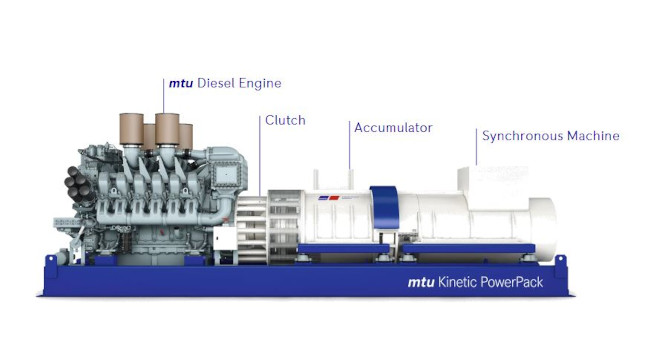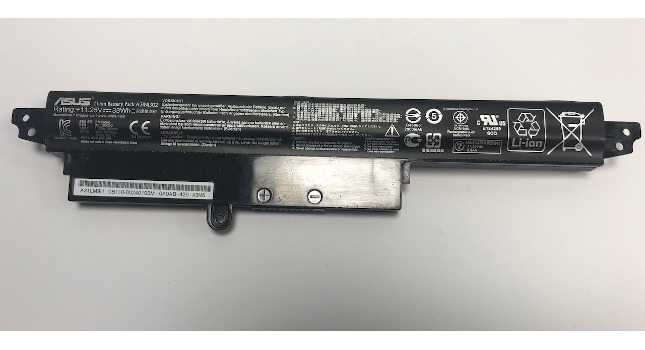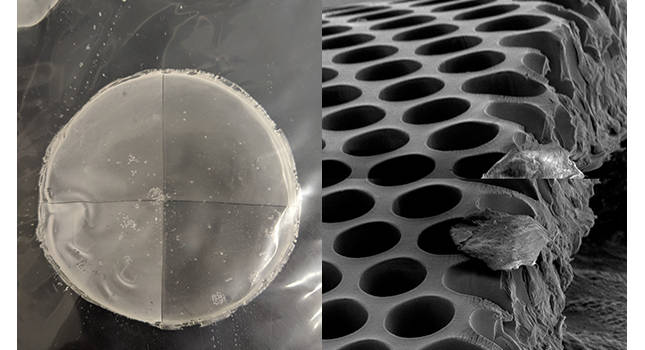Dynamic uninterruptible power supply systems provide conditioned electrical power to mission critical facilities. Learn the basics, along with benefits of specifying

For questions left unanswered during the Jan. 11, 2022, webcast about Dynamic UPS systems: How kinetic energy can protect sensitive processes and equipment, view the responses here.
Expert presenters:
- Nils Gitt, Head of Global Sales – Dynamic UPS, Rolls-Royce Solutions
- Yves Jansen, Application Sales Manager – Dynamic UPS, Rolls-Royce Solutions
Do you offer systems UL listed for 0.9 power factor?
Yves Jansen: The mtu Kinetic PowerPack is built/assembled taking into account the UL requirements
An inspector makes a check before sending the machine to US
In US, on-site, there is a final inspection by a UL inspector, which gives the UL stamp
Does mtu have pdf brochures on these products?
Yves Jansen: The mtu Kinetic PowerPack – discover the Power of Kinetic Energy brochure can be downloaded from our website on the link:
How do we integrate these kinetic energy sources into our power study software for determining short circuit current, coordination and arc flash energy? Do we treat these kinetic energy sources as if they are a typical generator?
Yves Jansen: Yes, on independent mode, we have to take into consideration that the mtu Kinetic PowerPack system is working as a generator that is isolated from the grid. The synchronous machine (working as an alternator) has specific characteristics (X’’d, Xo, etc.). Those characteristics will depend of the rating of the unit.
On conditioning mode, we have to take into consideration that the mtu Kinetic PowerPack system is working as a generator that works in parallel with the grid. A reactor (choke) is installed in between the DUPS and the grid.
We will be pleased to share the reactor and synchronous machine data for specific case.
How long (in seconds) the kinetic energy carries the load before transferring the load to the diesel generator?
Yves Jansen: Typically, after a mains failure, the mtu Diesel Engine of the mtu Kinetic PowerPack is on speed after a time period of 2 to three seconds.
After that period, the diesel engine is smoothly loaded. That operation takes around two seconds.
So, the total period of time that the kinetic accumulator carries the load (exclusively or partially) is four to five seconds.
How noisy is this piece of equipment?
Yves Jansen: Same noise as a standard diesel generator: around 100 – 105 dBA@ 1 m depending of the size and the type of the dynamic UPS.
Acoustic treatment as to be foreseen (same type of treatment as the one used for diesel generator).
Are the engines used with Kinetic PowerPack available for either natural gas fuel or diesel fuel?
Yves Jansen: The mtu Kinetic PowerPack dynamic UPS are available with mtu Diesel Engine. Our R&D is working on the possibility of using gas engine.
Does this replace the traditional standby generator?
Yves Jansen: The mtu Kinetic PowerPack dynamic UPS replaces the traditional standby generator but also the static UPS and the batteries.
Will the electrical loads see a decreasing AC frequency while the engine is being started and connected? If so, what is the typical maximum frequency drop and duration for a PowerPack solution at rated load?
Yes, it the critical loads see a frequency while the engine is being started and connected. The typical frequency fluctuation is +/- 1Hz from nominal frequency at rated load during a period of time of around six seconds
How long does this take to replace normal power when there is a power outage?
Yves Jansen: Instantaneously. The mtu Kinetic PowerPack – discover the Power of Kinetic Energy brochure can be downloaded from our website on the link:
You will find at Page 8 and 9 a short description of how the dynamic UPS works.
You mentioned that in the European facility the installation is able to handle a high inrush current — can you elaborate as to how/why the system is able to provide a high inrush current?
Yves Jansen: The mtu Kinetic PowerPack is equipped with a synchronous machine having a very low impedance: the sub transient reactance Xd is around 5% for a 1000 kVA unit and around 9% for a 2000 kVA.
Because of that low impedance, the mtu Kinetic PowerPack has an inrush current capability of 20 In for the unit of 1000 kVA and 11 x In for the unit of 2000 kVA.
Can mtu also provide the UPS switchgear to interface between the utility, the Kinetic PowerPack and the electrical load?
Yves Jansen: Yes, it is usually included on the dynamic UPS scope
Which U.S. Environmental Protection Agency emissions tiers are available for the diesel engine?
Yves Jansen: The mtu Kinetic Powerpack is equipped with mtu engines.
The Gendrive mtu Solution guide brochure can be downloaded from our website on the link:
https://www.mtu-solutions.com/content/dam/mtu/download/applications/power-generation/3190171_mtu_Solutionguide_Gendrive.pdf/_jcr_content/renditions/original./3190171_mtu_Solutionguide_Gendrive.pdf
At page 63, you will find the Technical Engine Data.
The mtu Kinetic PowerPack are equipped with engines of the series 2000 and 4000 GX4 that are emission standard US EPA stationary EMERG Tier 2, US EPA Nonroad Tier 2 compliant and of the series 1600 that is are emission standard US EPA stationary EMERG Tier 2, US EPA stationary EMERG Tier 3, EU Nonroad St IIIA Comp, US EPA Nonroad Tier 2 compliant, US EPA Nonroad Tier 3 compliant.
Do you have any data that compares the carbon footprint of the Kinetic PowerPack versus static UPS technology?
Yves Jansen: Unfortunately, not. However, the carbon footprint is, among others, proportional to the efficiency of each system and so their electrical losses.
The efficiency of a mtu Kinetic PowerPack of 2000 kW is 96.7%.
The efficiency of a typical static 1000 kW SUPS is 95.6% in double conversion at rated load. In addition, the static UPS needs air conditioning system, it decreases the efficiency of 1.5%. It means a total system efficiency of 94.1%.
If we take an average of 0.85 pounds of CO2 emissions per kilowatt-hour of electricity production, for a power rating of 2000 kW, the use of SUPS will have an impact of around 2.300.000 pounds of CO2 over a period of 10 year in addition to the one if a dynamic UPS would be used.
On the Ascenty system layout, what are the SB loads?
Yves Jansen: Mostly the chillers.
What is the difference at the larger units between the KP5 and KP7?
Yves Jansen: The main difference between the KP5 and the KP7 is their Kinetic accumulator Type/Size.
The mtu Kinetic PowerPack with power rating of 2250 kVA and onward can be equipped with two KP5 Kinetic Energy Accu’s or one KP7 Accu.
Can you elaborate on how the kinetic energy is stored and remains available to be used when needed?
Yves Jansen: The answer can be downloaded from the following link:
What are the lead times for delivery of a system?
Yves Jansen: Typically, the FAT can be organized four to six months after the order.
Do you have natural gas engines?
Yves Jansen: The mtu Kinetic PowerPack dynamic UPS are available with mtu diesel engine. Our R&D is working on the possibility of using gas engine.
What is the transfer time from ups to generator in the event of utility failure?
Yves Jansen: Typically, after a mains failure, the mtu diesel engine of the mtu Kinetic PowerPack is on speed after a time period of two to three seconds.
After that period, the diesel engine is smoothly loaded. That operation takes around two seconds.
So, the total period of time that the Kinetic accumulator carries the load (exclusively or partially) is four to five seconds.
Have you used the application on microgrids in the U.S.?
Nils Gitt: So far DUPS have not been used in microgrids in the U.S., but we certainly see potential here.
How long can the kinetic accumulator maintain power before the generator kicks in, say for 2000 kVA at full load?
Yves Jansen: The answer can be downloaded from the following link:
What is the typical delay that the inertial power can cover before degrading should the generator not start, or possibly not need to start?
Yves Jansen: The answer can be downloaded from the following link:
How does RR service these units? RR field services? Third party?
Nils Gitt: Depending on the location and the project, we service our units with own RR resident service technicians or via third-party distributors.
How much energy (kW) is required to maintain the ACCU rotating to ensure the seamless transition of electrical energy to the critical load?
Yves Jansen: The efficiency of a mtu Kinetic PowerPack of 2000 kW is 96.7% at full load.
That efficiency takes into consideration the electrical consumption required to maintain the ACCU rotating and for keeping the synchronous machine at its nominal speed as well as the losses in the choke and in the control system. It does not take into consideration site specific consumption such as the cable losses between the synchronous machine and the Power panel, the preheating of the Diesel engine and the ventilation of the set room.
Total average electrical power consumption (losses between the input and the output) is:
Output Power x (1- Efficiency) / Efficiency = 2000 kW x (1 – 96.7%) / 96.7% = 68.25 kW
How is the added protection device to reduce the short circuit impact the performance of the UPS?
Yves Jansen: On an isolated parallel configuration, chokes (reactors) are installed between the output of the mtu Kinetic Powerpack(s) and the paralleling bus. The load(s) are connected directly at the output of the mtu Kinetic Powerpack(s).
The system needs to rotate continuously.
How much time is required (and how often) are maintenance windows for replacing bearings or other friction reduction devices?
Yves Jansen: Around 3 working days once every 10 years
If the diesel engine runs at 1800 RPM, and the synchronous machine runs at 3000 RPM, is there a transmission to step up the speed?
Yves Jansen: For 60 Hz application, the nominal speed of the Diesel engine is 1800 RPM, the synchronous machine runs at 1800 RPM and the Accu at 3000 RPM.
More details about the architecture of the mtu Kinetic PowerPack can be downloaded from the following link:
How do you deal with emission restrictions for diesel generator? Especially since you likely will need to run generators more often.
Yves Jansen: As per our statistics, on stable grid, the Diesel Engine of the mtu Kinetic Powerpack is running around 20 hours per year. This is mostly for tests purpose.
The mtu Kinetic Powerpack is equipped with mtu Engines.
The Gendrive mtu Solution guide brochure can be downloaded from our website on the link:
https://www.mtu-solutions.com/content/dam/mtu/download/applications/power-generation/3190171_mtu_Solutionguide_Gendrive.pdf/_jcr_content/renditions/original./3190171_mtu_Solutionguide_Gendrive.pdf
At page 63, you will find the Technical Engine Data.
The mtu Kinetic PowerPack are equipped with engines of the series 2000 and 4000 GX4 that are emission standard US EPA stationary EMERG Tier 2, US EPA Nonroad Tier 2 compliant and of the series 1600 that is are emission standard US EPA stationary EMERG Tier 2, US EPA stationary EMERG Tier 3, EU Nonroad St IIIA Comp, US EPA Nonroad Tier 2 compliant, US EPA Nonroad Tier 3 compliant
If required exhaust filters such as SCR, dusts filters could be added.
How would you compare this technology with the fuel cell technology?
Yves Jansen: It is two different technologies that are used for different purposes.
During a utility power outage what is the time before the load sees power restored?
Yves Jansen: Instantaneously, the load will not see power outage
The mtu Kinetic PowerPack – discover the Power of Kinetic Energy brochure can be downloaded from our website on the link:
You will find at Page 8 and 9 a short description of how the dynamic UPS works.
Assuming that the utility grid does not experience an outage for a certain amount of time. Is the diesel engine exercised on a regular basis?
Yves Jansen: Yes, every week, at a day and hour that is chosen by the user, the control system of the mtu Kinetic PowerPack will make an automatic test of the diesel engine.



